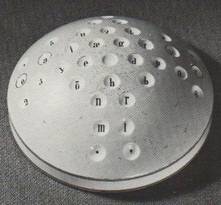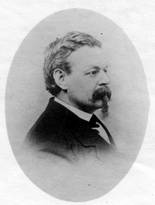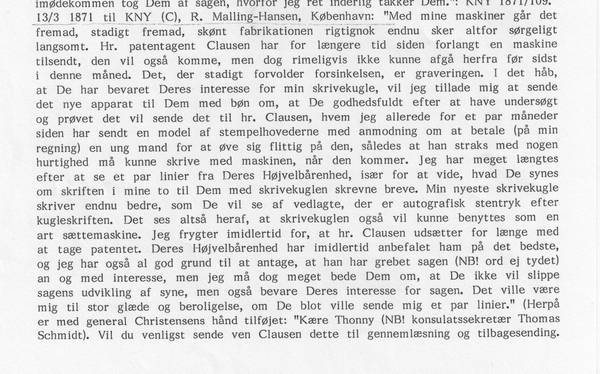1871.03.13 English
SA: This is another RMH-letter found in the archives of the Danish Consulate in New York. So far we know only of a transcribed version, and therefore we cannot know for sure whether the original was written by hand or typed on the writing ball; however since the transcriber has been unable to decipher a word, it is very likely that the original was handwritten, and as we know RMH’s handwriting was not always easy to make out. The letter is addressed to the Danish consul in New York, general Christian Thomsen Christensen, who held this office from 1870 until 1873. RMH is still struggling to get an American patent and, as we know, the writing ball did not achieve the success in the States that RMH had been hoping for – unfortunately. He is also complaining that the production of new machines in Denmark is progressing at a very slow pace, in particular the engraving of the pistons take a long time. In the consulate archive this letter is catalogued under the code of KBY 1871/109.
13/3 1871
R.Malling-Hansen,
Copenhagen
With my machines things are progressing all the time, however the manufacturing is painstakingly slow. The patent agent, Mr Clausen, requested a machine quite some time back, it will arrive but I am not likely to be able to ship it from here until the end of this month. What is still causing the delay is the engraving. In the hope that you still maintain your interest in my writing ball, I will permit myself to send the new machine to you[1] with a prayer that you may have the kindness, after having investigated and tried it, to forward it to mr Clausen, to whom I already a couple of months ago sent a sample of the punch holders[2], requesting him to pay (on my account) a young man to practice diligently on it, so that he will be able to write with some speed on the machine, when it arrives. I have been looking forward very much to receive a couple of lines from your Grace, in particular in order to know how you feel about the writing in the two letters, written on the writing ball.[3] My newest version of the writing ball writes even better, as you may well verify by the enclosed, which is an autographic lithograph of the writing ball writing. From this sample you can see that the writing ball can also be use as a sort of type-setting machine. However, my fear is that mr Clausen is delaying the patent seeking process too much.[4]However, your Grace has recommended him highly, and I have all the reasons to assume that he has handled the case (NB! cannot read this word!) keenly, however I have to beg you not to let go of the development of this case and to maintain your interest. It would be a great satisfaction and reassurance if you could send me just a few lines.
(General Christensen has added here, by hand:
“Dear Thonny (NB! Consulate Secretary Thomas Schmidt). Kindly send this to my friend Clausen for his perusal and remittance. C”)
(To the letter was an attachment, a typing sample received at the Consulate on 30/3 1871)KNY 1871/109
[1] SA: From subsequent letters we know that eventually RMH managed to send a writing ball to the USA – a sample of the large, flat version – but he didn’t send it to general Christensen, rather directly to Mr Clausen. In a subsequent letter to the general he regrets having had to send the machine directly to Clausen and explains it by the great inconvenience of him having to unpack the machine and then possibly having to pack it again for forwarding it to Clausen.
[2] SA: This is a very interesting piece of information. We know that RMH had made porcelain models of the writing ball fingerboard, lending it to various companies as samples of the writing ball, probably in the hope that they would later on buy a complete machine. Two such porcelain models are known today, a white and a black one.
[3] SA: Unfortunately those two writing ball letters to general Christensen have not been found so far.
[4] SA: In spite of RMH’s worries, in fact Clausen succeeded in getting him the American patent. In a letter to Thomas Schmidt from April 1872 Clausen writes that the patent is ready, but that RMH is demanding a very large sum to sell it: 25.000 USD in cash. It turned out to be very difficult to find a buyer, and in the end Clausen had to give up and referred the entire matter to Thomas Schmidt in New York.





